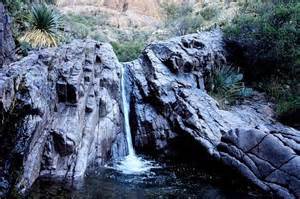 Last time (12/26/23) I touched on:
Last time (12/26/23) I touched on:
- Getting a water supply secured because it is absolutely essential.
- Putting together a cache of weapons to protect your family and your ‘retreat’.
- Along with the above two items I also outlined what medical preps should be stashed there as well.
- And lastly, I provided information that was a little out of the box. I suggested a stash of items that if you got there with nothing, you could have some basics to survive.
Remember, I am talking about; 1) starting from scratch, 2) this is also a ‘bugout’ location not just building a vacation home or homestead. So the things I suggest that are oriented towards the bugout location can be used later as a ‘prep’ even though they aren’t part of the basics of a building a home.
Now it is time to move to the next phase, at least in my opinion 🙂 Well, that assumes that you were/are able to handle all of the above.
Here is where I deviate just a bit from the 7 Common, but your situation is a bit different since your starting point is literally at zero. Also, I am going to view this a little different than some preppers would; I am going to look at some of this as if you get there with nothing but you and your family.
Exposure –
As I outlined in the larger ‘layers’ article on this subject, there are two basic forms of exposure; 1) personal, 2) structural.
Personal exposure…a full set of clothes for each person in your family for each season. Yes, that includes shoes. No, it doesn’t have to cost a lot. If it was me, I would buy all of these items at thrift stores. Granted, you might not find all the name brands or current in-style clothes…but, in this situation you will be grateful for comfortable clothes period! To learn more about my suggestions on clothing you can < click here >
Then there is an important, and easily overlooked, point…shelter. Yes, I know you want to build something but how soon is that going to happen? I suggest looking for a decent used family sized tent…times two. Why two? One to live in and one to store stuff in. They don’t have to be fancy, they don’t have to be expensive, they don’t have to be huge, they need to provide shelter and that is about it. If you’re worried about them leaking, make it easy on yourself…by a super large heavy-duty tarp. Then drape that tarp over the tent(s) protecting it from rain and/or snow. Position the tents in an “L” shape with the corner “V” facing the predominant wind direction.
Why super-large? Extend the tarp out from the front of the tent(s) to provide a covered sitting and cooking area.
Don’t forget a water-proof ground cloth for under the tent(s). A used rug or two for inside the tent makes life a lot nicer. A good door mat outside the door of the tent is a valuable tip as well. Yeah, don’t wear shoes/boots inside the tent, keep them outside. Or, directly inside the tent door on a small door mat. A decent pair of slippers to change into and out of for wearing in the tent will be a luxury that you will appreciate.
One aspect of this exposure thing is fire. Have multiple ways to start a fire…in any condition. And yes, have a way, or two or three, to harvest firewood from your property…yup, saws and maybe a hatchet. Think about having a morning where everyone gathers whatever firewood and kindling they can find laying around on the ground. Store it as dryly as possible.
Starvation –
Bottom line…you will need a cache of food. How much? That is entirely up to you at this point.
Obviously once you are settled in with a more permanent situation you could follow my overall ‘layers’ recommendations of food storage < click here >. But, at this point you are starting from ground zero. I would suggest a minimum is 2-weeks worth of MREs for each person. In a really tough situation those same meals could be stretched to 4-weeks.
If you are worried that isn’t enough, then go with more of them. Or, alternatively you could buy cases of MountainHouse freeze-dried prepared meals. This is entirely up to you.
One of the good things about MREs is they come with heaters so you can have warm meals. The MountainHouse stuff is great tasting and you can eat them cold once they are re-hydrated.
To learn a whole more on the whole ‘starvation’ and food thing < click here > and here < click here >
Caching –
You may be wondering how to store this stuff at your new property. There are multiple ways to do that. There are the large and expensive options such as a Conex; very secure but easy to see. Then you could go with weather resistant plastic or steel tool boxes. I kinda like 55-gal steel drums with the tops that close with the steel band.
Whatever option works for you is fine. Just remember to make them as unobservable as possible. Camouflage whatever containers you decide to use. Place them in clumps of trees. Breakup their profiles. Don’t put them where they can be seen from a road. And in this day and age, think about your neighbor’s hobby drones poking around.
To learn more about ‘cache’ information < click here >
Housing –
While you are putting all of the above stuff together be thinking about what kind of permanent house you want. Some folks will only want a ‘tiny home’, other will be able to afford a 4,000sq’ luxury log cabin like Yellowstone. I am not sure about your budget, I am going to go with the basic options…you can take it from there.
First thing is a storage building. Yup, a place for all your stuff, a work shop, a temporary sleeping/living structure. You need a place to lay your head and/or to work on things while you are there…before the main/permanent structures are completed. Building one is an option for sure; it will take both time and money.
You can save a lot of time if buy something like a ToughShed. Get a decent one with a covered porch; that outdoor extra space is a mental health vacation. I built my shed and spent a ton of money, wish I hadn’t. A roll-up door on one end of your shed will come in handy.
Whatever you do…1) install a very sturdy and imposing looking mesh security door, 2) install very sturdy and imposing looking mesh security window screens. Will they prevent all break-ins? Of course not, but it will keep the vandals somewhat at bay and dissuade the casual weekend thief.
When it comes to the house you will eventually live in you have to decide one question first…will you build it yourself or have it built?
Building it yourself will will save you a ton of money but will take you a long time. It took me a year, full-time, to build our 900sq’ home and 100sq’ utility room addition by myself. Having it built, either onsite or modular, will be potentially faster but you will be at the mercy of the builder…and potential ‘codes’ department. And a ‘built’ home will cost you more money than building yourself…probably between 2 – 4 times more.
I will leave this entirely up to you…but make the decision and start the process now. Why? It could take you a year or more, maybe 3, to be able to have a finished home on your property.
Don’t overlook the homes location. For us; 1) we didn’t want it seen from the road, 2) we didn’t want it easily seen period, 3) we wanted a flat area for garden and yard surrounding the house, 4) plenty of trees around us for aesthetics. Some neighbors built on the side of a mesa/bluff/hill; they wanted the view. Not us. If they have an expansive view of the surrounding area, then others can just as easily see them.
Just a small tip…a neighbor bought a modular home, got a great deal paying cash upfront, delivery set for 11 months. It got delivered 2-1/2 years later. Lots of excuses by the company. No leverage by the buyer/neighbor…he had already paid for it…they had all of his money. Sure he could have sued, and spent thousands and thousands of dollars doing it, and taking years to do so. To get what? The house they already paid for.
Property Structures & Infrastructure –
Pick the location and orientation of the house for exact and specific reasons. Pick the location of the shed and any other outbuildings in relation to the house…again, for exact and specific reasons. DO NOT just start building or placing structures in various locations! Have a plan that makes sense for what you are doing.
For us…1) as few windows as possible on south and west sides (too hot 6 months of the year), 2) large covered and screened porch on the north side right outside the front door for extra living area, 3) large deck area on the east side for entertaining.
Summary –
I can’t stress enough how important it is…no, how absolutely vital it is…to have a well throughout, reasoned, logical, realistic, and written plan…before you start. Have drawings and maps. List specific reasoning for each structure and exactly why it is to be placed in a particular location.
Example #1: In our area the summer sun from the south and west can be brutal. We placed as few windows on those sides as possible. Alternatively, you could place a large wrap-around covered deck on those sides of the house to protect it from the sun.
Example #2: Our house is small, 900sq’. But, we have a 375sq’ covered and screened in porch that can be used 7 – 8 months of the year very comfortably. Then there is the additional 450sq’ deck on the east side of the house that can be used after 2pm in the summer months. And then there is the 220sq’ patio area on the east side of the house that can used after noon. So there is lots of living space…some of which is outside…at a much lower building cost.
Example #3: Our yard, garden, and orchard areas are all inside of the chain link fencing…along with the house. And we have two dogs to keep it all secure. Our yard area is pretty flat that could easily be turned into additional garden area. The area inside of the chain link fence is approximately 1 acre.
And now…there will be more, probably next week, but this is enough to keep you busy.
Articles in this Series –
Related Articles –
- Layering & the Common 7: Introduction
- Layering & the Common 7: Part #7 – Exposure
- Layering & the Common 7: Part #8 – Starvation
- 7 Days of September – Day #7: Starvation
- Where to stash your survival cache?
2009 - 2024 Copyright © AHTrimble.com ~ All rights reserved No reproduction or other use of this content without expressed written permission from AHTrimble.com No legal, economic, or financial advice is given, no expertise to be assumed. See Content Use Policy for more information.






















